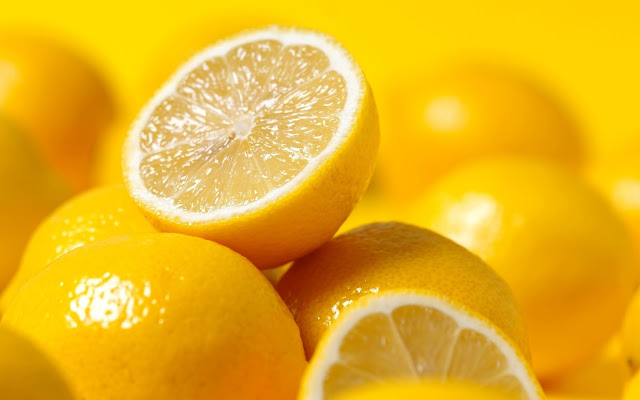Boat Maintenance
Tips for Living Aboard
When Life Hands You Lemons, Clean Your Boat
Monday, November 21, 2016TheCambrians
If you’re a regular follower of our blog, then you know
that we just spent four weeks on the
hard after having to unexpectedly haul out. It hadn’t been that long since our
last time out of the water, but we wanted to make the most of it while we
waited (and waited) for parts to arrive. First up on the list of jobs was to
tackle the ugly brown “moustache” around the waterline.
Last
year, a fellow cruiser recommended using lemon juice for the job. According to
him, the process required very little scrubbing, so we were game. To make
things easier, we transferred the juice to a spray bottle and got to work. We
sprayed a two-foot wide strip and spread the juice with a sponge. After
allowing it to sit for ten minutes or so, we came back and wiped the area
clean. In places where the stains were more stubborn, we repeated the process,
finding the juice was most effective in direct sunlight (something that’s a
little hard to come by in October).
We
have to admit, we were a little surprised with the results but shouldn’t have
been.
It
comes down to science. The main components of lemon juice are citric acid,
limonene, ascorbic acid and lemon oil. Basically, it’s a natural bleaching
agent, thanks to its acidity. And it’s an inexpensive way to clean (just watch
out for bees). There were a few areas of the hull that were beyond the reach of
the lemon juice, but were easily taken care of with oxalic acid.
But
how does it compare?
Our
first choice for cleaning stains on the hull is oxalic acid. We buy crystals in
bulk from a chemical company south of Seattle and mix it ourselves, which makes it quite
economical (2.5 kilograms for US$43.44). On a scale from 1 to 10 as a cleaner,
we rate it as a ten. After applying the acid on the stains and letting it sit
for a while, all that’s required is washing down the hull with water. The
downside is this: oxalic acid brings the copper in the anti-foul to the surface
and streaks the paint unless you can keep the whole thing wet (or off the
anti-foul).
With
the lemon juice, it took less than one 15-ounce bottle to do the job. At a cost
of around US$2, that’s a bargain. It did require more elbow grease than the
oxalic acid, which a downside. But doesn’t damage or streak the anti-foul and
didn’t require any extra clean-up or vigilance on our part – both big bonuses.
On a scale of 1 to 10, we rate it a 7.5 to an 8 and will definitely use it
again.
So, when life hands you
lemons, use them to clean your boat.












10 comments
I'm going to have to test this to clean the ICW brown off our swim steps. Remarkably, my 2 coats of wax repelled the yellow on the hulls!
ReplyDeleteIf you do, let me know how it works for you (probably a little better thanks to the sunshine) . . . and watch out for the bees! I don't want my buddy, Hastings, getting stung.
DeleteAnd you can chuck a slice in your G & T while you admire your handiwork :) :) (actually I hate gin- mine's a vodka or a caipirinha if you're treating!)
ReplyDeleteYou got it, Jo!
DeleteThat's a great tip! I love the smell of lemons.
ReplyDeleteI was so glad someone told us about it and was surprised at how well it worked. It required more elbow grease on my part, but I think it was worth it.
DeleteWonderful tip. And, better for the environment. Did you squeeze them all yourself or buy 100% lemon juice bottles? :-)
ReplyDeleteYou can do it either way and use the juice to clean a variety of surfaces -- Mother Nature is an amazing thing!
DeleteGreat tip! Better for the environment and it the smell would be delightful.
ReplyDeleteIt was a little sticky at times but, yes, much kinder on the environment and me!
Delete